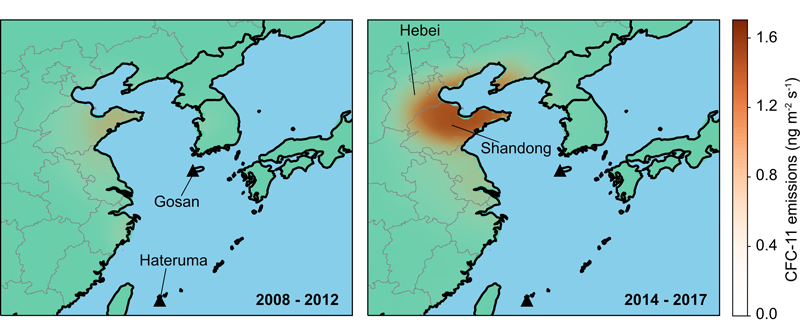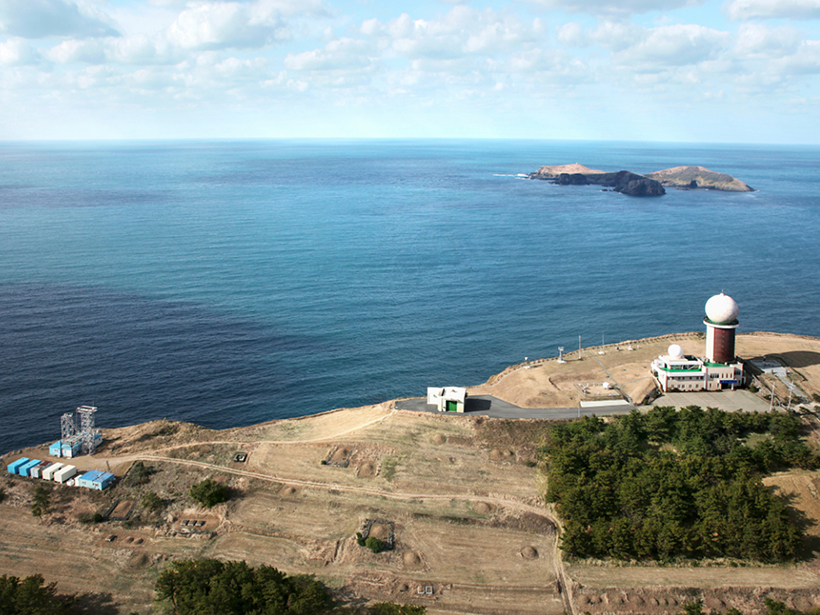In 2010, a chlorofluorocarbon known as CFC-11 was phased out of production because of its detrimental impact on Earth’s protective ozone layer. But since 2013, a slowdown has been observed in the rate at which the banned substance has been declining in the atmosphere, suggesting that the foaming agent is once again being manufactured somewhere on Earth. A new study is helping to narrow down the source of the easily dispersed gas to two industrial areas in eastern China, an important step in curbing its production.
In 1987, the Montreal Protocol on Substances That Deplete the Ozone Layer was enacted in an effort to halt the production of chemicals that break down the ozone layer, which protects the planet from harmful ultraviolet rays. To date, it is the only United Nations treaty to be ratified by every country on Earth.
The sheer magnitude of the emissions strongly suggests that the source must be new production, not the breakdown of existing materials.
Last year, a study published in Nature showed an unexpected and persistent increase in CFC-11 emissions, starting in 2013. The paper’s “findings suggested that somebody, somewhere, has started to emit CFC-11 in quite substantial quantities, on the order of 10,000 tons per year,” says Matthew Rigby, an atmospheric chemist at the University of Bristol in the United Kingdom and lead author of the new study, also published in Nature.
But narrowing down a point source of an easily dispersed gas is not easy, Rigby says. “The atmosphere is very diffusive. The further you get from the source, the more diffuse the signal becomes.”
To help pinpoint the source of the emissions, Rigby and his colleagues turned to two atmospheric monitoring stations in South Korea and Japan run by the Advanced Global Atmospheric Gases Experiment and the Japanese National Institute for Environmental Studies.
By combining the monitoring data with models that work backward to trace how CFC-11 is dispersed through the atmosphere, the team was able to gauge that starting around 2013, an extra 7,000 tons of CFC-11 annually was coming from eastern China, particularly from in or around the provinces of Shandong and Hebei.

“We can’t yet say if it’s being emitted from one place or several in those areas,” Rigby says. But the sheer magnitude of the emissions strongly suggests that the source must be new production, not the breakdown of existing materials such as through the demolition of old buildings containing CFC-11 materials, he says.
Stopping the production will likely fall to Chinese authorities, says Neil Harris, an atmospheric chemist at Cranfield University in the United Kingdom who was not involved in the new study. “I think that the attention these studies is getting in the scientific community and in the media will be enough to motivate the Chinese government to regulate their factories.”
Detecting the other fraction of the rogue global CFC-11 emissions will take a more comprehensive monitoring network, Rigby says. Currently, the United States, parts of Europe, and Japan have reasonably good coverage with existing networks, but “there’s a huge swath of the planet we don’t monitor at all,” including India, South America, and Africa.
“If there’s one thing these two studies have shown, [it] is how absolutely crucial atmospheric monitoring measures are for the continued success of the Montreal Protocol,” Rigby says. “If it [weren’t] for these records, we would have no idea that new production was occurring.”
—Mary Caperton Morton (@theblondecoyote), Science Writer
Citation:
Morton, M. C. (2019), Banned CFC emissions tracked to eastern China, Eos, 100, https://doi.org/10.1029/2019EO126433. Published on 19 June 2019.
Text © 2019. The authors. CC BY-NC-ND 3.0
Except where otherwise noted, images are subject to copyright. Any reuse without express permission from the copyright owner is prohibited.

